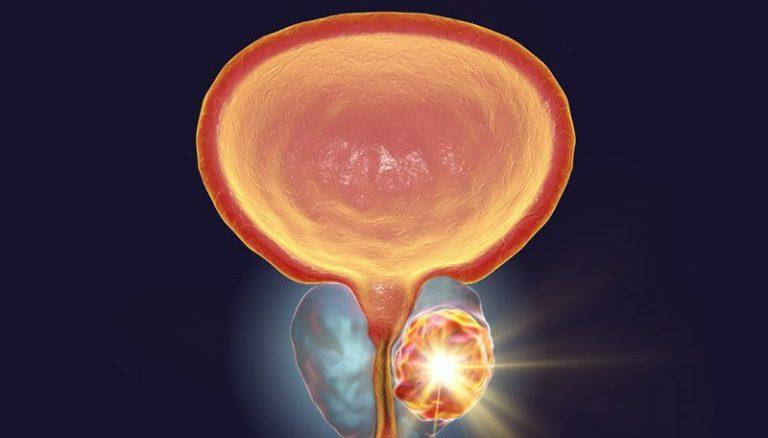
Everything You Need to Know About Prostate Cancer
What is Prostate Cancer?
Prostate cancer is a type of cancer that begins in the prostate gland and usually progresses slowly. The prostate is an important gland in the male reproductive system that regulates the flow of urine and semen. Prostate cancer is one of the most common types of cancer in men, especially prevalent in individuals over the age of 50. However, with the advancement of early detection methods in recent years, this type of cancer can be identified and treated at earlier stages.
What Are the Symptoms of Prostate Cancer?
Prostate cancer may not show any noticeable symptoms in its early stages, making early diagnosis difficult. However, as the disease progresses, certain symptoms may appear:
Difficulty Urinating: Difficulty in urine flow may occur due to prostate enlargement.
Frequent Nighttime Urination: Needing to urinate frequently at night can be an early sign of prostate cancer.
Blood in Urine or Semen: If blood is seen during urination or ejaculation, a doctor should be consulted immediately.
Pain or Discomfort During Ejaculation: Pain may be experienced due to pressure or irritation in the prostate area.
Pain in the Hips, Back, or Thighs: These pains may indicate that the cancer has spread to surrounding tissues.
If you experience any of these symptoms, it is important to consult a specialist. Early diagnosis increases treatment options and helps control the disease.
Risk Factors for Prostate Cancer
There are various factors that increase the risk of prostate cancer. Having any risk factor does not necessarily mean you will develop prostate cancer, but it is important to be aware of these risks:
Age: The risk of prostate cancer increases significantly after the age of 50.
Family History: A family history of prostate cancer can increase the risk. Additionally, individuals carrying BRCA1 or BRCA2 gene mutations, which are also linked to breast cancer, have a higher risk.
Race: Men of African descent have a higher risk of prostate cancer, and the disease may progress more aggressively.
Diet and Lifestyle: High-fat diets, insufficient physical activity, and habits such as smoking can increase the risk of prostate cancer.
Diagnostic Methods for Prostate Cancer
Certain tests can be performed for early diagnosis:
PSA Test: The Prostate-Specific Antigen (PSA) level is measured in the blood to provide information about prostate health. High PSA levels may indicate a risk of prostate cancer, but it should be noted that this test can sometimes give misleading results.
Digital Rectal Examination (DRE): This physical examination involves manually checking the prostate. It is performed to detect any hardness or abnormality in the prostate.
Biopsy: If PSA and DRE results are abnormal, the doctor may take a tissue sample from the prostate for biopsy. This sample is examined in the laboratory to check for the presence of cancer cells.
MRI and Ultrasound: Advanced imaging methods are used to determine whether the cancer has spread beyond the prostate.
Treatment Methods for Prostate Cancer
When prostate cancer is diagnosed, treatment options vary depending on the stage of the disease, the patient age, general health status, and other factors:
Surgical Intervention: Complete removal of the prostate (radical prostatectomy) can be performed if the cancer has not spread outside the prostate. This method can offer a permanent solution but carries the risk of side effects.
Radiotherapy: High-energy radiation is used to kill cancer cells. This method is especially preferred in older patients or those who cannot undergo surgery.
Hormone Therapy: Hormones can support the growth of cancer cells. Therefore, reducing or completely blocking hormone levels can slow the progression of the cancer.
Chemotherapy: Used in advanced-stage prostate cancer, this treatment involves powerful drugs to destroy cancer cells.
Chemotherapy is generally preferred when other treatment options are not effective.
Active Surveillance: Especially in slow-growing prostate cancer, regular monitoring of the patient without immediate treatment is preferred. This allows observation of the cancer progression rate and treatment is initiated if necessary.
Ways to Prevent Prostate Cancer
Although it is not possible to completely prevent prostate cancer, certain lifestyle changes can help reduce the risks:
Healthy Diet: Diets rich in vegetables, fruits, fish, and healthy fats, such as the Mediterranean diet, may reduce the risk of prostate cancer.
Regular Physical Activity: Exercising at least several days a week can strengthen the immune system and improve overall health.
Reducing Smoking and Alcohol Consumption: Smoking and alcohol are factors that increase the risk of prostate cancer. Avoiding these habits can have a positive effect on health.
Regular Check-ups: Especially individuals with risk factors should have regular PSA tests and doctor check-ups, which are crucial for early diagnosis.
The Importance of Early Diagnosis in Prostate Cancer
Early diagnosis can be life-saving in prostate cancer. Since symptoms may not be noticed at first, regular health check-ups and PSA tests are very important. Prostate cancer detected at an early stage responds better to treatment and helps maintain the patient quality of life.
Prostate cancer is a common health problem in men as they age. Adopting a healthy lifestyle, having regular check-ups, and paying attention to symptoms are important for reducing the risk of prostate cancer and ensuring early diagnosis.

Social Media